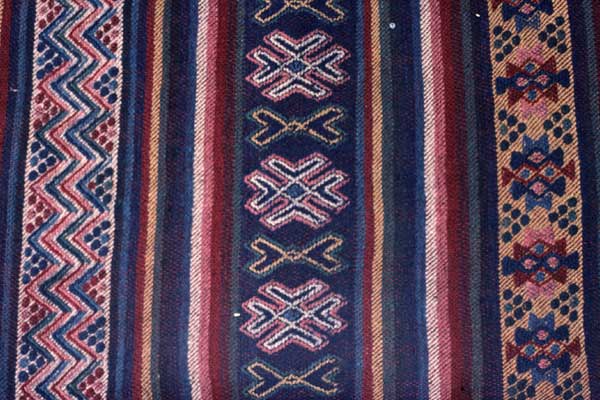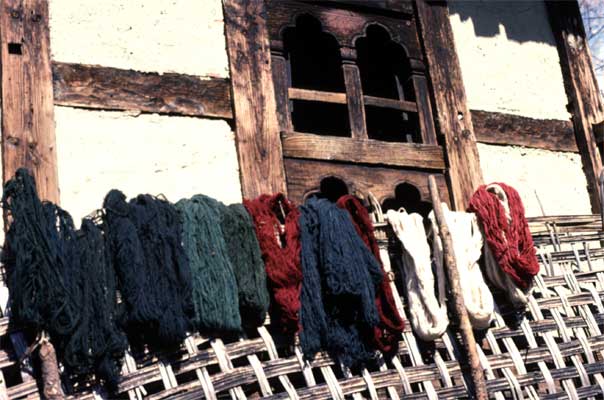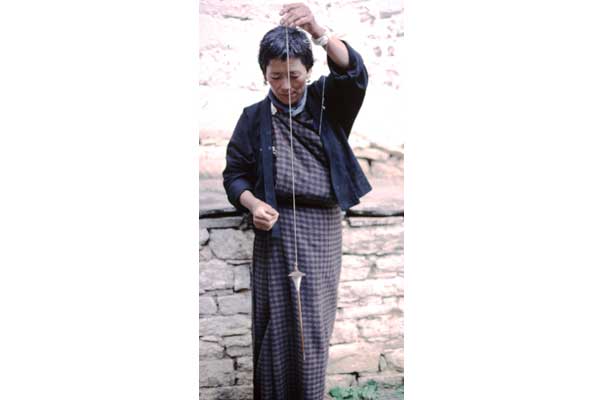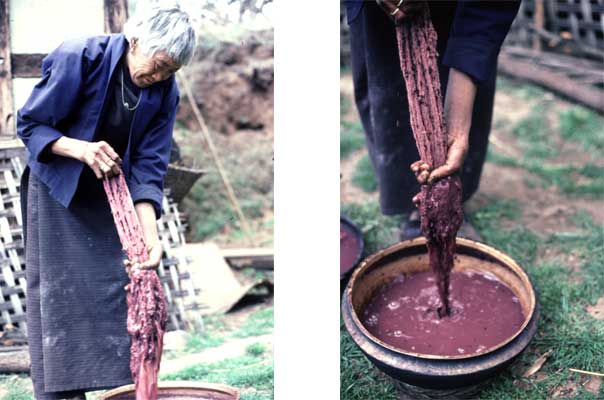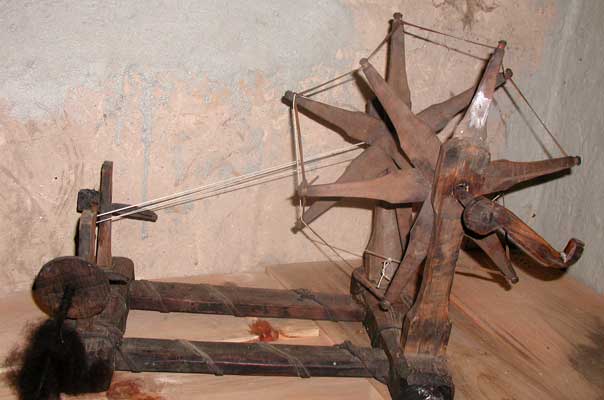Dyeing and Weaving
The Loom Room
Cloth production was a vital tradition for the household of the Ogyen Choling nagtshang. Weavers, almost always women, were selected from the village to be trained in the art of weaving. These weavers were then expected to pass on the skill to their daughters. Ogyen Choling nagtshang traditionally maintained a core of five to seven full time weavers. The weavers worked in the rooms located on either side of the entrance. In the past, the first sounds that greeted a visitor on entering the courtyard were the sounds of beaters beating the weft into the woof. The mistress of the house supervised the production of cloth.
This exhibit follows the process of cloth production from a description of the fibres, to how they are spun, dyed and woven. In the past Ogyen Choling maintained herds of sheep for wool production and yak for milk, draught and for their hair and wool. The sheep were sheared twice a year. Two kinds of fibre could be obtained from the yak, the coarse outer coat was cut and spun into yarn that were used for making ropes, tents and rugs while the soft inner coat from under the belly was plucked at moulting time. To supplement the locally available fibres, other yarns such as silk, cotton, nettle and later synthetics were used.
The main processes of preparing the yarns from the natural fibres were:
Spinning: Most of the wool was spun using the spinning wheel, additionally many women carried drop spindles with them so they could spin whenever they had time. However, it was mostly the men, who spun and twisted the yak hair.
Dyeing: Most of the dyes for colouring the fibres were natural dye stuff some of which were locally available.
Weaving: The weavers worked with three kinds of looms; the back strap loom was the oldest and most commonly used loom until the introduction of the horizontal frame loom in the mid 1950s. The card loom which is used for weaving fabrics with narrow widths was the third kind of loom.. All three kinds of looms are on display.
